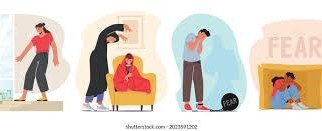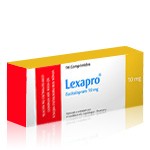Breaking the Chains: Understanding Panic Disorder with Agoraphobia


What is Panic Disorder with Agoraphobia?
An Answer to the Unseen Battle Within
Have you ever felt intense fear in a seemingly safe place—your heart races, your breathing shortens, and a sense of doom overtakes you? For individuals living with panic disorder accompanied by agoraphobia, this is a terrifying reality.
- Panic disorder involves sudden and repeated panic attacks—episodes of overwhelming fear and physical discomfort.
- Agoraphobia is the fear of being in situations where escape may be difficult or help unavailable, often leading to the avoidance of public or unfamiliar places.
- The two conditions frequently coexist, forming a debilitating cycle of fear, avoidance, and isolation.
These experiences aren’t just "in the mind"—they manifest through physical symptoms like chest pain, dizziness, and trembling. Sufferers often feel misunderstood and ashamed, further deepening their withdrawal from the world around them.
Understanding Panic Attacks
When the Mind Sends the Body into Overdrive
Panic attacks are sudden surges of fear that peak within minutes and often appear without warning. They can be triggered by stress, trauma, or appear out of the blue.
- Physical Symptoms: Heart palpitations, shortness of breath, chest pain, nausea.
- Emotional Responses: A fear of dying, losing control, or going insane.
- Behavioral Impact: Frequent hospital visits, avoidance of exercise or caffeine due to fear of symptoms.
Over time, the fear of having another attack can become more disabling than the attack itself, creating a feedback loop of anxiety and fear.
The Grip of Agoraphobia
When Fear Keeps You Home
Agoraphobia develops when the fear of panic attacks becomes so strong that individuals begin to avoid places where they feel vulnerable or exposed.
- Common Avoided Places: Malls, public transportation, theaters, crowded streets.
- Safety Behaviors: Only going out with a companion, sitting near exits, or avoiding outings altogether.
- Emotional Toll: Isolation, loneliness, loss of independence.
This leads to a shrinking world where the person feels safe only within the confines of their home, or even a single room. Daily tasks become monumental challenges.
The Vicious Cycle of Panic and Avoidance
How One Fear Fuels the Next
Panic disorder and agoraphobia often feed into each other. The fear of having a panic attack in public leads to avoidance, which reduces confidence in handling situations.
Cycle Outline:
- A panic attack occurs in a public setting.
- The memory of that fear leads to future avoidance.
- Avoidance increases fear sensitivity and reduces coping ability.
- Isolation leads to depression and worsened anxiety.
- This cycle can become self-reinforcing, making recovery seem impossible without intervention.
The Psychological Impact
More Than Just Anxiety
Beyond the physical and emotional effects, this disorder affects identity, relationships, and quality of life.
- Self-esteem: Sufferers often feel weak, embarrassed, or broken.
- Relationships: Friends and family may not understand, leading to social disconnection.
- Employment and Education: Many are forced to leave jobs or school due to their inability to function in public.
The disorder often coexists with depression, substance abuse, or other anxiety disorders, making treatment more complex but also more urgent.
Managing the Condition with Lexapro (Escitalopram)
A Hopeful Path Toward Relief Treatment for panic disorder with agoraphobia often includes a combination of medication and therapy. One commonly prescribed medication is Lexapro (Escitalopram), a selective serotonin reuptake inhibitor (SSRI) used to balance brain chemistry.
How Lexapro Helps:
- Reduces frequency and intensity of panic attacks.
- Lowers baseline anxiety levels, making daily life more manageable.
- Can improve mood and restore confidence in confronting feared situations.
Complementary Approaches:
- Cognitive Behavioral Therapy (CBT): Helps restructure negative thought patterns.
- Exposure Therapy: Gradual reintroduction to feared environments in a safe way.
- Lifestyle Changes: Regular exercise, reduced caffeine, and mindfulness practices support recovery.
Lexapro doesn’t offer overnight relief—it may take several weeks to see improvement. However, for many, it serves as a lifeline, allowing therapy and coping strategies to take hold.
There Is a Way Forward
Panic disorder with agoraphobia is more than nervousness—it’s a life-altering condition that demands compassion, understanding, and proper care. Recovery takes time, courage, and the right support system. With effective treatment, including medications like Lexapro, therapy, and self-care, individuals can break the cycle and reclaim their freedom. Life outside the walls of fear is possible.
Article Post: Editorial Team of RXShop.md
(Updated at May 31 / 2025)

